Vietnam is becoming an increasingly safe and fascinating destination for international travelers. As a result, more and more people are eager to explore the country from North to South. Join us on a 15-day Vietnam itinerary, traveling from North to South, and discover the must-see attractions that offer a panoramic view of the nation's natural wonders and rich culture.
- 1. Must-See Destinations on a 15-Day Vietnam Itinerary
- 2. Suggested 15-Day Itinerary for Vietnam
- Day 1: Fly to Hanoi
- Day 2: Hanoi City tour
- Day 3: Hanoi – Ninh Binh – Hanoi – Overnight train to Lao Cai
- Day 4: Lao Cai – Sapa
- Day 5: Sapa – Bac Ha
- Day 6: Bac Ha – Lao Cai – Overnight train to Hanoi
- Day 7: Hanoi – Ha Long Bay
- Day 8: Ha Long Bay – Hanoi – Flight to Hue
- Day 9: Full Day to Discover Hue City
- Day 10: Hue – Da Nang – Hoi An
- Day 11: Full Day Discovering Hoi An
- Day 12: Hoi An – Da Nang – Flight to HCMC (Saigon)
- Day 13: Ho Chi Minh City – Ben Tre – Can Tho
- Day 14: Can Tho – Ho Chi Minh City
- Day 15: Ho Chi Minh City – Fly Home
1. Must-See Destinations on a 15-Day Vietnam Itinerary
HANOI -THE CAPITAL CITY
Like many other countries, Vietnam’s capital—Hanoi—is a must-visit destination for any traveler. Typically, visitors spend 1–2 days exploring the Hanoi city.
Hanoi is the economic, political, and cultural center of Vietnam. Although it is a large, modern city, Hanoi retains traditional features that captivate visitors. It's easy to spot old houses weathered by time, tree-lined streets providing welcome shade, and small lakes nestled among densely populated neighborhoods. It’s rare to find a city with as many lakes and trees as Hanoi.
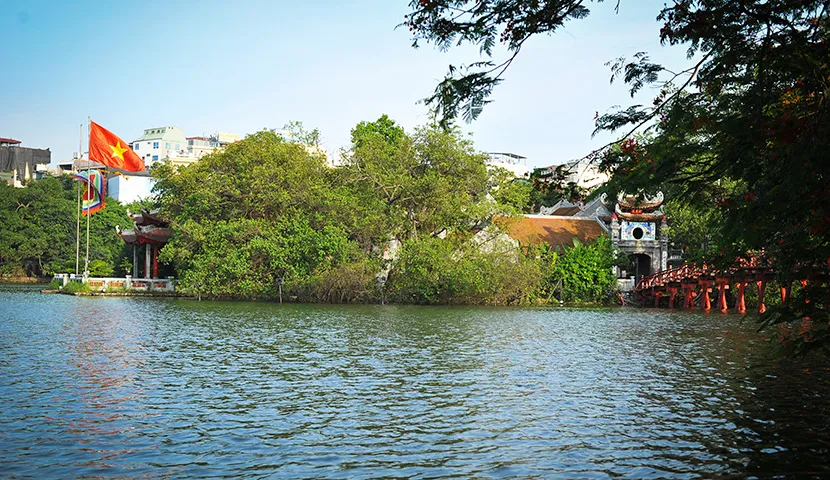
Hoan Kiem Lake in Hanoi city
So, alongside its bustling energy, Hanoi also reveals a quiet, ancient, and unexpectedly peaceful side. Even if you’re not usually drawn to noisy cities, museums, or historical sites, we still recommend spending at least one night in Hanoi. It’s a great place to rest after a long flight to Vietnam and start soaking in the city’s vibrant atmosphere.
Don’t forget to enjoy a bowl of Hanoi pho, sip a cup of coffee at a charming roadside café, or try some local street food. You might just fall in love with Hanoi.
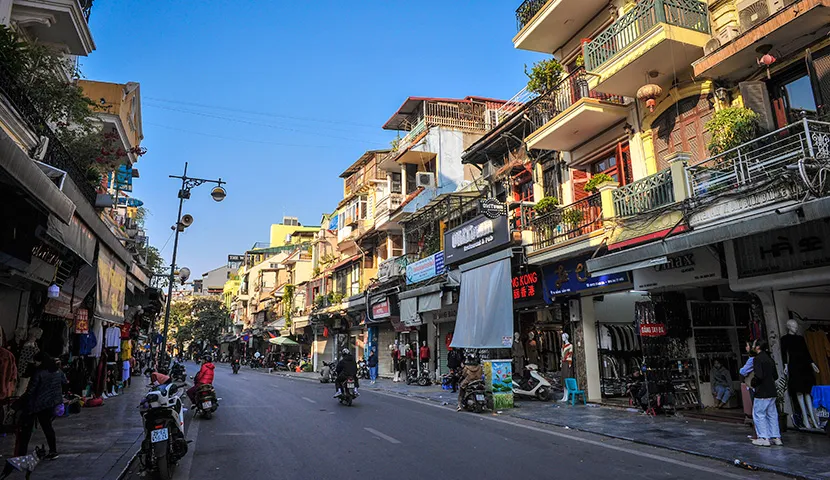
Hanoi Old Quarter
Hanoi also boasts many attractions, most of which are located in or near the city center, making it easy to get around. In just 1–2 days, you can fully explore this thousand-year-old city.
If you have more time in this lovely city, consider visiting 1 or 2 traditional handicraft villages. These villages tell fascinating stories about the trades and craftsmanship of Hanoi’s people throughout history. Some great options include Ha Thai Lacquer Village, Chuong Conical Hat Village, Bat Trang Pottery Village, Duong Lam Ancient Village, and Quang Phu Cau Incense Village.
You can also explore unique spiritual sites such as Thay Pagoda and Perfume Pagoda, which showcase the region’s rich religious architecture and cultural heritage.
NINH BINH
Just a two-hour drive from Hanoi, you'll arrive in Ninh Binh—a destination often referred to as "Ha Long Bay on land." Ninh Binh appeals to a wide range of travelers, whether you're interested in history and culture or prefer exploring nature.
In addition to scenic boat rides and visits to well-known tourist sites, you can spend relaxing hours cycling along winding village roads, through lush rice fields, and among majestic limestone mountains.
If you're drawn to peaceful countryside landscapes, staying overnight in a homestay or a cozy bungalow nestled at the foot of the mountains is an ideal choice.
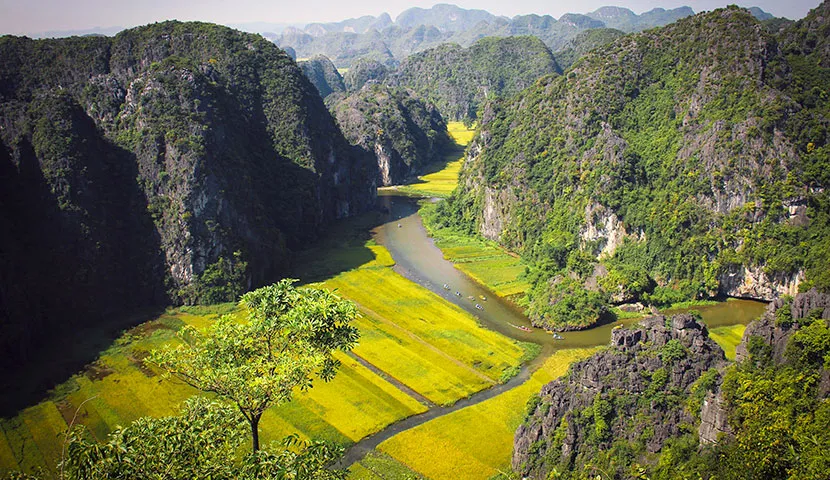
A great view of Tam Coc in Ninh Binh
Ninh Binh offers a variety of activities that can easily fill one or two days, depending on how much time you have in Vietnam.
Popular attractions like Tam Coc, Trang An, and Van Long are all worth visiting. However, covering just one of these is usually enough, as the experiences are quite similar.
- Tam Coc can be a bit noisy and touristy, but the scenery is stunning—especially during the ripe rice season (April to May).
- Trang An, a UNESCO World Heritage Site and filming location for Kong: Skull Island, features a more extensive cave system than Tam Coc. The boat ride here takes about 3 hours. The best time to visit is during the rice season from August to September.
- Van Long offers a more untouched, wild landscape compared to the other two and is ideal for those seeking peace and quiet.
If you have more time in Ninh Binh, you can combine your visit with excursions to Kenh Ga or Thung Nham. Other notable attractions in Ninh Binh include: King Dinh and King Le Temples, Hoa Lu Ancient Capital, Bai Dinh Pagoda, Bich Dong Pagoda, Hang Mua Cave, and Phat Diem Cathedral.
Travel tip: From Ninh Binh, it's easy to continue your journey without returning to Hanoi. Convenient next destinations include Halong Bay, Lan Ha Bay, Cat Ba Island, Mai Chau, Pu Luong, and Hue.
SAPA & BAC HA
Decades ago, Sapa was a resort destination for French colonials. Today, it has become a must-visit spot for travelers exploring Vietnam. Sapa enchants visitors with its mystical mist-covered landscapes, majestic mountains layered one after another, winding terraced rice fields carved into hillsides, and the vibrant cultures of its many ethnic minority groups.
Most visitors reach Sapa by overnight train or car and typically stay for 3–4 days. During their stay, they immerse themselves in nature and experience the rich cultural diversity of the local ethnic communities, gaining insight into their daily lives and traditions.
Because Sapa is so captivating, it has gradually become more touristic and commercialized. New hotel developments—both large and small—continue to emerge to meet the growing demand from visitors. However, the enchanting Muong Hoa Valley and the colorful ethnic minority villages still offer authentic experiences waiting to be explored. During the rice season, from May to September, the scenery is truly paradise-like.
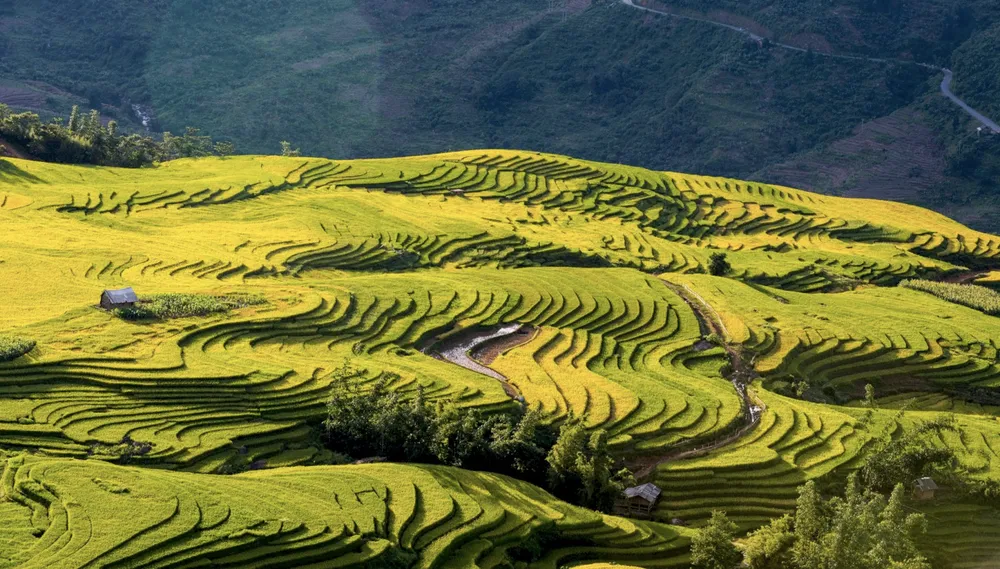
A visit to Sapa wouldn’t be complete without experiencing one of the region’s vibrant local markets, especially Bac Ha Market, located about 100 km from Sapa town. This is the largest outdoor market in Lao Cai and takes place only once a week, on Sunday morning. If you're visiting on another day, consider alternatives like: Can Cau Market (Saturday); Sin Cheng Market (Wednesday); Coc Ly Market (Tuesday morning). These periodic markets are ideal places to learn about the lives of local ethnic groups. They're not just venues for buying and selling goods—they're also hubs for cultural exchange, community gathering, and celebration.

To truly experience a local market, immerse yourself in the atmosphere. Sip a cup of corn or rice wine with a local (perhaps already a little tipsy!), dance along to traditional ethnic music, try some grilled meats or fresh fruit, and browse handmade crafts. You might even witness the animal trade. Plan to spend at least two hours—any less, and you’ll likely miss the essence of the market.
Traveling to Sapa is relatively easy, even for solo travelers. The locals are friendly and well accustomed to welcoming tourists, and you’ll find everything you need without much hassle.
HA LONG BAY – BAI TU LONG BAY – LAN HA BAY
When travelers think of Vietnam, Ha Long Bay often comes to mind—a true symbol of Vietnamese tourism. Recognized by UNESCO as a World Heritage Site and named one of the Seven Natural Wonders of the World, Ha Long Bay features thousands of limestone mountains, islands, and islets rising dramatically from the emerald waters. These formations are arranged naturally, yet harmoniously, creating a breathtaking seascape. As you cruise deeper into the bay, you’ll feel completely immersed in nature—almost as if you’ve stepped into another world. It truly feels like paradise.
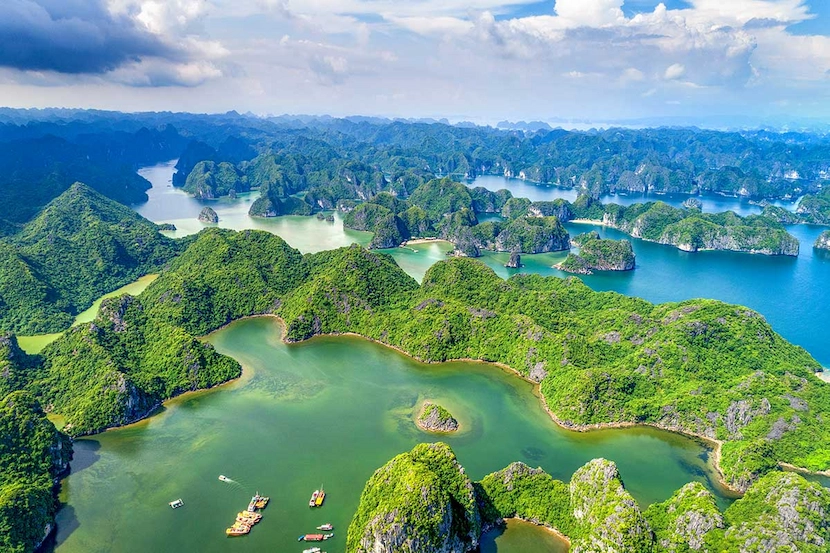
A part of Lan Ha Bay in Vietnam
In addition to Ha Long Bay, the nearby Bai Tu Long Bay and Lan Ha Bay are equally stunning. These three bays are part of the same geographic complex, often collectively referred to as the Ha Long Bay area. While the landscapes are similar across all three—featuring majestic limestone formations—each has its own character. The route from Hanoi to Ha Long Bay is the shortest and most developed, with the highest concentration of cruise boats. Bai Tu Long and Lan Ha, located farther out, are less crowded and offer a more tranquil, pristine experience.
Many cruises offer all-inclusive packages at very reasonable prices. These typically include round-trip shuttle service, an English-speaking tour guide, all meals on board, and an overnight stay in a private cabin equipped with hotel-like amenities.
After your cruise, you can conveniently travel to Hanoi Airport for a flight to your next destination.
HUE – ANCIENT CAPITAL
For Vietnamese people, Hue is often considered a dreamy city—gentle and romantic, both in its scenery and its people. Known for its rich history, Hue is home to many important cultural and architectural landmarks, including the Hue Imperial Citadel and the royal tombs of Emperors Tu Duc, Minh Mang, Khai Dinh, and Gia Long. These sites showcase stunning architecture that blends harmoniously with the natural surroundings. Hue has been recognized by UNESCO as a World Cultural Heritage Site.
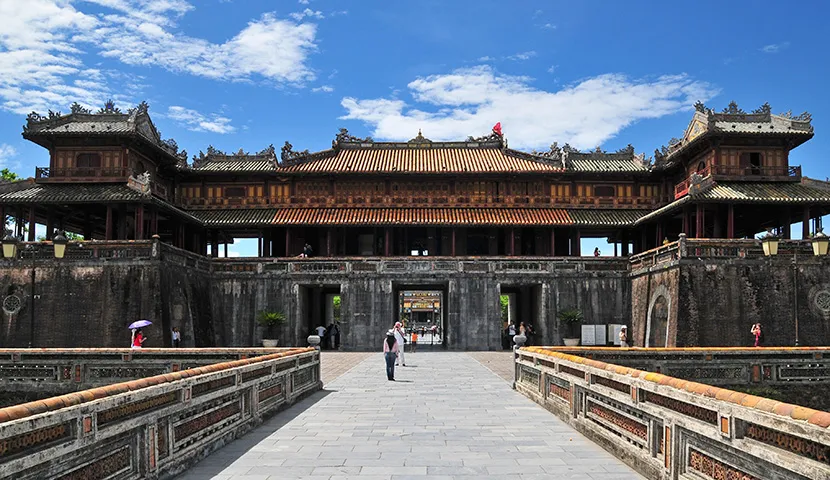
Hue Imperial Palace
Beyond its historical sites, visitors can take a leisurely walk or bike ride through Hue’s peaceful villages, explore the daily life of the locals, and sample Hue’s famous specialties, such as bun bo Hue (spicy beef noodle soup), various types of dumplings, and Hue royal tea.
A popular experience among travelers is participating in a cooking class in Thuy Bieu Village, where you can visit a local market, tour the village, learn to cook traditional dishes, and enjoy a relaxing foot massage. It’s a truly memorable and engaging cultural activity.
To reach Hue from Hanoi, you can take the overnight train instead of flying to save on travel time. The train usually departs at 7:30 PM and arrives in Hue around 8:45 AM the next morning—giving you a full day to explore the city. Spending 1–2 days in Hue is ideal for experiencing its charm and historical richness to the fullest.
If you have additional time, consider extending your trip to nearby destinations such as Phong Nha (Quang Binh), known for its impressive caves, as well as Quang Tri and other surrounding areas rich in culture and natural beauty.
HOI AN ANCIENT TOWN
Hoi An consistently ranks among the most popular tourist destinations in Vietnam—and for good reason. Many things captivate visitors and keep them coming back: the golden-hued ancient walls, moss-covered roofs, vibrant lantern-lit streets, the warm smiles of the locals, and a cuisine that’s both simple and internationally acclaimed. It’s hard to list everything that makes people fall in love with this charming town.
Surrounding Hoi An Ancient Town are peaceful villages like Tra Que, Thanh Ha, and Cam Thanh, home to the famous Bay Mau Coconut Forest, where you can enjoy a fun and unique basket boat ride.
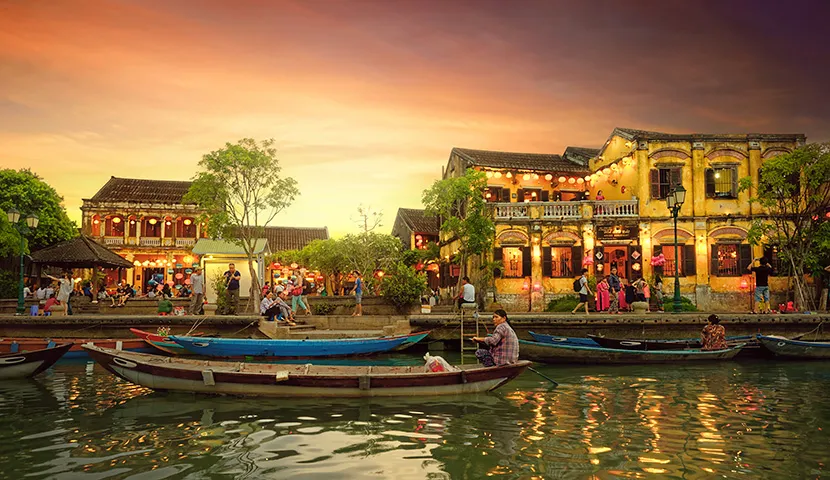
Hoi An Ancient Town in central Vietnam
Hoi An is also blessed with beautiful beaches just 4–5 km from the town center. An Bang Beach, in particular, remains largely unspoiled and is a perfect spot for relaxing by the sea. During the summer months, Hoi An becomes an ideal—and budget-friendly—vacation choice.
Hoi An is friendly, easy to explore, and effortlessly lovable. You can wander at your own pace without worry. Most hotels offer free bicycles, making it convenient to explore the town and surrounding countryside. We recommend staying at least 1–2 days, or even longer if time allows.
Travel tip:
Keep in mind that October to November is the rainy season in Hue and Hoi An. Heavy rains can last for days, occasionally causing flooding or storms, which may disrupt transportation plans.
SAIGON
Saigon (officially Ho Chi Minh City) is the economic hub of Vietnam. Unlike the ancient charm of Hanoi, Saigon is a fast-paced, bustling metropolis filled with modern skyscrapers and busy commercial centers.
In addition to must-see landmarks like the Independence Palace, Notre Dame Cathedral, Saigon Opera House, Ben Thanh Market, Thien Hau Pagoda, FITO Museum, and the War Remnants Museum, consider dedicating an extra day to visiting the Cu Chi Tunnels and the Cao Dai Temple—both offering unique insights into Vietnam’s history and spiritual life.
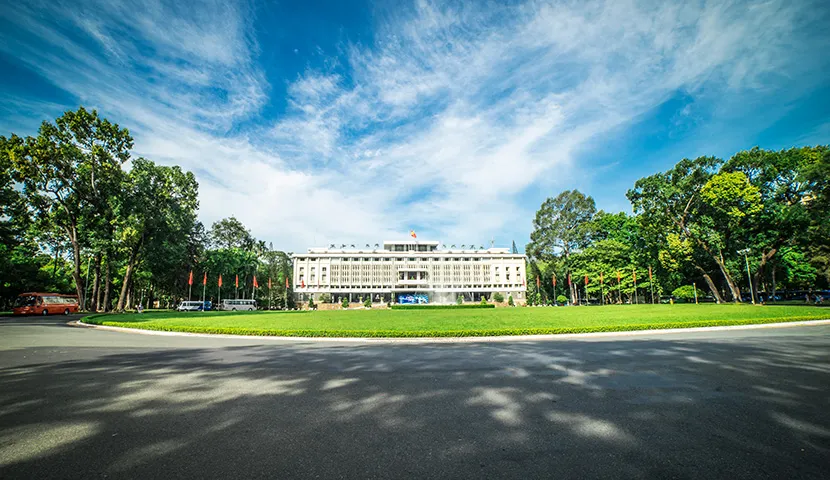
Saigon Independence Palace
Many visitors rave about the Saigon street food motorbike tour (typically from 5:30 PM to 10:00 PM). Riding on the back of a motorbike through the city's energetic traffic while sampling local dishes offers a thrilling and immersive experience.
Of course, not everyone is drawn to the city's hustle and bustle. Some travelers prefer to simply wander the streets or take a relaxing break in a café, soaking in the local atmosphere at their own pace.
For convenience, it's recommended to stay at a hotel in District 1, which puts you close to major attractions, restaurants, and shopping areas.
MEKONG DELTA
To gain the most complete view of Vietnam, you should not miss the Mekong Delta during your journey. Life here is closely tied to the rivers, and floating markets are one of the most distinctive and traditional features of this region.
However, with the rise of modern conveniences, wet markets on land have become more common and practical for local communities. As a result, floating markets are gradually disappearing. Today, only a few remain active on a daily basis—most notably the Cai Rang Floating Market in Can Tho and the Long Xuyen Floating Market.
The floating markets operate early in the morning, so you’ll need to wake up around 6:00 AM to catch the action. After visiting the market, you can return to your hotel for breakfast—or better yet, enjoy a bowl of the Mekong’s specialty noodle soup right on a boat like the locals, which is a truly unique and memorable experience.
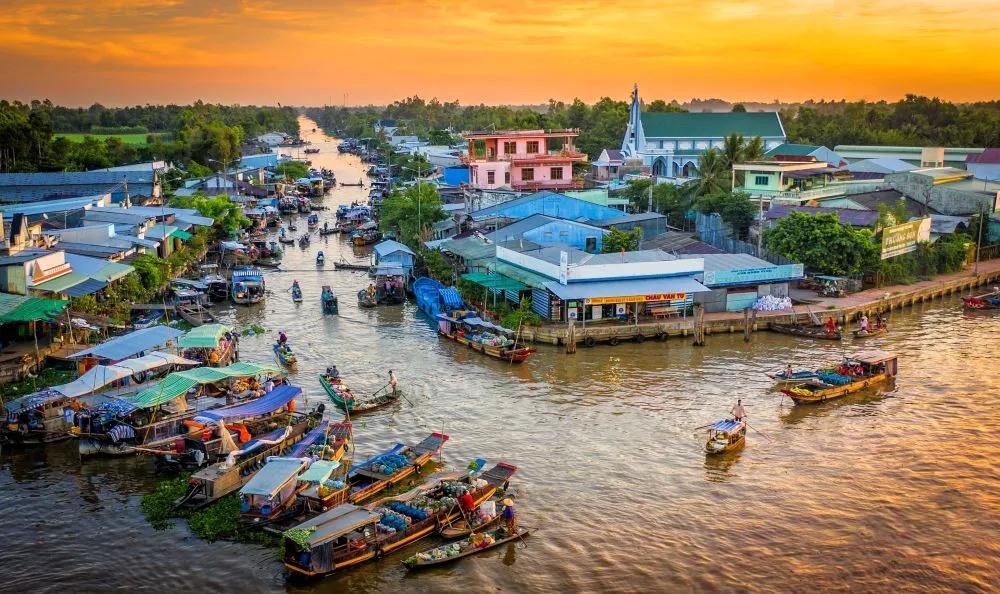
Cai Rang floating market in Can Tho
The Mekong Delta is also renowned for its vast rice fields, fruit-laden orchards, and coconut-lined canals. It's the perfect place to escape the hustle and bustle of Saigon and immerse yourself in peaceful, rural life.
If you're short on time, consider a day trip to the Mekong region, exploring nearby destinations such as Cai Be–Vinh Long or Ben Tre. These areas offer a glimpse into delta life and are more accessible for a quick visit.
However, to truly experience the richness of local culture, you should spend at least 2 days—ideally 3 days—in the Mekong Delta to fully appreciate its charm and way of life.
Some important destinations in the Mekong Delta that should not be missed include: Cai Be, Vinh Long, Ben Tre, Sa Dec, Long Xuyen, Can Tho, Tra Vinh, and Chau Doc.
After finishing your Mekong River tour, you can continue your journey to Phu Quoc Island for a relaxing beach break. There is a daily flight from Can Tho to Phu Quoc around 12:00 PM, as well as daily speedboats from Rach Gia and Ha Tien to Phu Quoc.
Another exciting option is to travel to Cambodia by speedboat from Chau Doc, offering a seamless cross-border experience.
Learn more: Vietnam & Cambodia's Essential Highlights - 15 day itinerary
2. Suggested 15-Day Itinerary for Vietnam
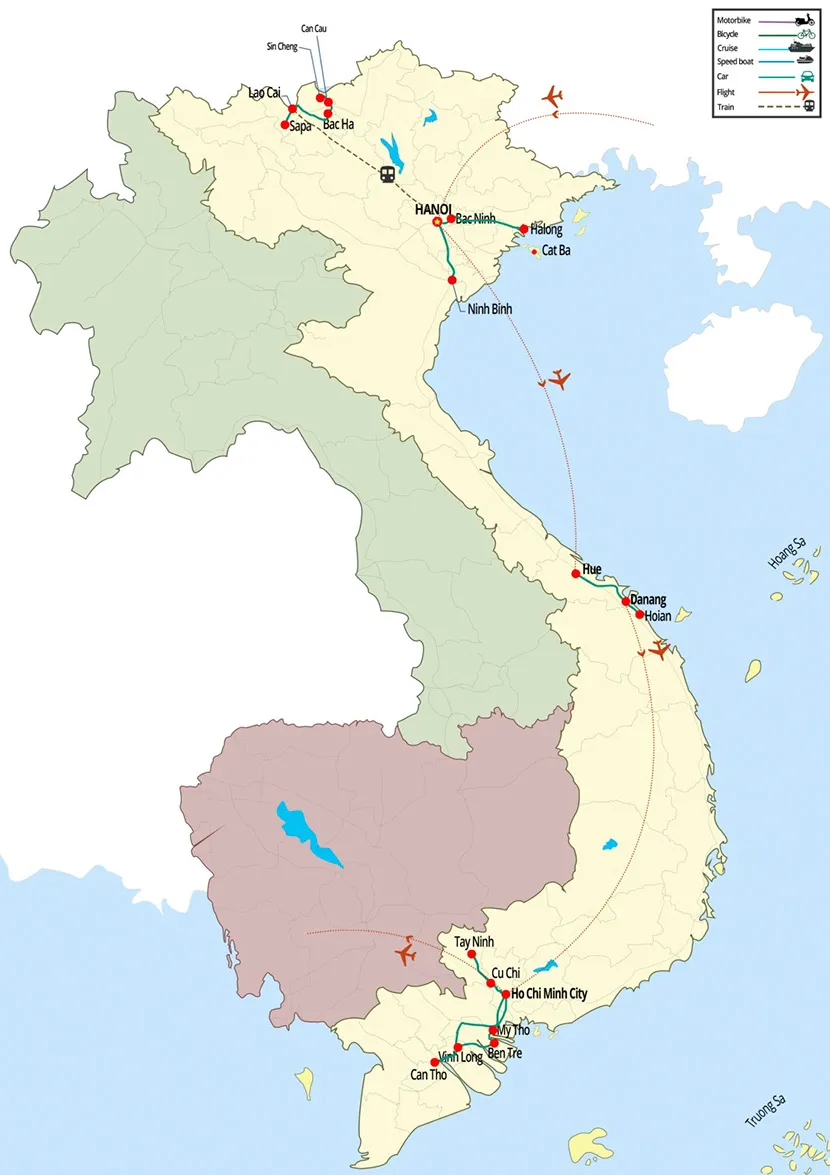
Vietnam itinerary from North to South map
Day 1: Fly to Hanoi
After a short transfer from Hanoi Airport to the city center, you can check in at your hotel and take some time to relax. Depending on your flight arrival time, a recommended activity for today is a leisurely walk through Hanoi’s Old Quarter and around Hoan Kiem Lake. The 36 streets of Hanoi are full of charm and surprises, with many interesting things waiting to be discovered.
Day 2: Hanoi City tour
For your full day in Hanoi, you can explore several key attractions, including the Ho Chi Minh Mausoleum, One Pillar Pagoda, Temple of Literature (Quoc Tu Giam), Museum of Ethnology, Vietnamese Women’s Museum, Fine Arts Museum, Tran Quoc Pagoda, and Quan Thanh Temple.
As the sun sets, Hanoi transforms into a lively yet enchanting city, perfect for unwinding or exploring. Head to the Old Quarter's weekend night market (open Friday to Sunday evenings) for a lively mix of street food, souvenirs, and local handicrafts. It stretches from Hang Dao Street to Dong Xuan Market and is a favorite for both locals and tourists. Before that, you can catch a performance at the Water Puppet Theater near Hoan Kiem Lake. This unique art form originated in northern Vietnam and is a fun way to learn about local folklore. If you're up for nightlife, Ta Hien Street in the Old Quarter is Hanoi’s go-to spot for backpackers and night owls. It's lively, crowded, and full of bars, cheap beer, and great people-watching.
A few helpful notes:
- The Ho Chi Minh Mausoleum is only open in the mornings and is closed every Monday and Friday. During summer or public holidays, it can get very crowded with local visitors, and you may have to wait in line for hours. Don’t worry—some of the most interesting parts are actually the surrounding sites, including the gardens, fish pond, and the house on stilts. If you visit in the morning, you must go through the Mausoleum to access the stilt house. To avoid the crowds, consider exploring the surrounding area in the afternoon instead.
- The Museum of Ethnology, one of Hanoi’s most popular museums, is closed on Mondays. As alternatives, both the Vietnamese Women’s Museum and the Fine Arts Museum offer rich and engaging experiences and are open daily.
Day 3: Hanoi – Ninh Binh – Hanoi – Overnight train to Lao Cai
Spend the day exploring the breathtaking landscapes of Ninh Binh by choosing between two distinct routes—each offering its own unique charm.
- Classic Route: Hoa Lu – Bich Dong – Tam Coc (or Trang An)
This route is perfect for first-time visitors. Start with a visit to Hoa Lu, the ancient capital of Vietnam in the 10th and 11th centuries, where you can explore temples dedicated to King Dinh and King Le. Next, head to Bich Dong Pagoda, a peaceful spiritual site nestled against a limestone cliff.
- Authentic Route: Thung La – Van Long
For a quieter, more off-the-beaten-path experience, opt for this authentic route.
After a full day of exploring, return to Hanoi in the evening. Later, transfer to the railway station to catch the overnight train to Lao Cai.
Note: The night train typically departs around 9:30 PM (21:30), so you'll have time to relax or enjoy dinner in Hanoi before departure.
>> See more: Ninh Binh private tours
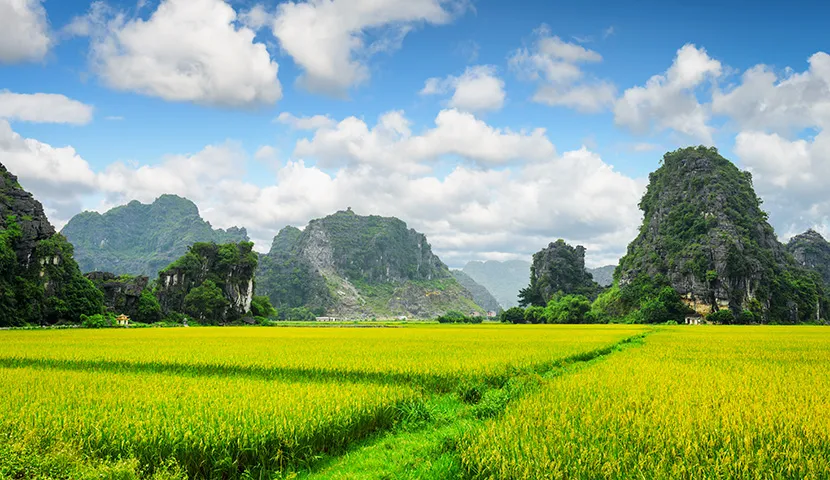
Rice field in Ninh Binh - Vietnam
Day 4: Lao Cai – Sapa
Arrive at Lao Cai Station around 6:00 AM, where a car will be waiting to take you to Sapa (approximately a 45-minute drive). If you've booked a tour with IZITOUR, a hot shower and breakfast near the station can be arranged for your comfort.
Today, you’ll have a full day to explore Sapa. Embark on a trek through the stunning Muong Hoa Valley, following the scenic route: Y Linh Ho – Lao Chai – Ta Van.
Day 5: Sapa – Bac Ha
Travel from Sapa to Bac Ha by car, which takes about 3 hours. If your visit falls on a Sunday, it’s best to depart early to experience the lively Bac Ha Market, the highlight of the area.
On other days of the week, you can spend the morning visiting popular Sapa landmarks such as Sapa Town, Fansipan Mountain, Ham Rong Mountain, and the villages of Ma Tra and Ta Phin before heading to Bac Ha in the afternoon.
Day 6: Bac Ha – Lao Cai – Overnight train to Hanoi
In the morning, visit the vibrant Bac Ha Market (if it’s market day) and explore the surrounding ethnic minority villages. Later in the day, transfer to Lao Cai Station to board the overnight train back to Hanoi.
>> See more: Sapa tour packages.

Ethnic minority in colorful attire going to Bac Ha Market
Day 7: Hanoi – Ha Long Bay
From Hanoi, depart for Ha Long or Cat Ba Island, depending on your cruise’s departure point. You’ll arrive around 11:30 AM to 12:00 PM, where you’ll be welcomed aboard and begin your journey through the bay.
The first day typically includes lunch on board, sightseeing, kayaking, or visiting caves—the perfect introduction to the natural wonders of the Ha Long Bay area.
Day 8: Ha Long Bay – Hanoi – Flight to Hue
Most cruises offer early morning activities such as Tai Chi practice or a golf class on the sundeck. Afterward, enjoy a light breakfast and continue with the cruise’s scheduled activities.
Lunch is usually served around 10:30–11:00 AM, followed by disembarkation. Then, you’ll be transferred to the airport for your flight to Hue.
>> See more: All Halong Bay Cruises with real-time price
Day 9: Full Day to Discover Hue City
If you're interested in history, spend the day visiting some of Hue’s most iconic relics: the Imperial Palace, Tu Duc Mausoleum, and Minh Mang Mausoleum.
If you'd prefer a more balanced experience and don’t want to visit too many historical sites in one day, consider spending half the day exploring Hue’s rural villages. You can choose from options such as Thuy Bieu Village, Tien Non – Thanh Tien – Sinh Villages, or La Chu Village.
In the afternoon, visit the Hue Citadel and take a stroll through Dong Ba Market, the largest traditional market in the city.
Day 10: Hue – Da Nang – Hoi An
If you wish, you can continue exploring more of Hue’s attractions in the morning. Then depart for Hoi An, traveling via the scenic Hai Van Pass—often considered the most beautiful coastal road in Vietnam.
On the way, make a stop at the Cham Museum in Da Nang, which houses a significant collection of artifacts from the Champa civilization.
The journey from Hue to Hoi An takes about 3 hours by car.
>> See more: Hue package tours
Day 11: Full Day Discovering Hoi An
Hoi An offers a variety of activities to suit every traveler's interests. Here are some popular things to do within a day—feel free to choose based on your preferences:
- Explore the Ancient Town on Foot: Visit iconic landmarks such as Chua Cau (Japanese Covered Bridge), the Assembly Halls of Fujian, Trieu Chau, and Quang Dong, the ancient houses of Tan Ky, Quan Thang, and Phung Hung, and Chua Ong Pagoda.
- Bike to Tra Que Vegetable Village: Enjoy a scenic ride through the countryside and learn about traditional farming practices.
- Take a basket boat ride in the Bay Mau Coconut Forest: A fun and interactive way to experience local life on the water.
- Visit Cham Island (half-day trip): Ideal for beach lovers and snorkeling enthusiasts.
- Discover My Son Sanctuary (half-day trip): Explore this UNESCO World Heritage Site filled with ancient Hindu temple ruins and learn about the Champa civilization.
>> See more: Hoi An Package Tours
Day 12: Hoi An – Da Nang – Flight to HCMC (Saigon)
There are many daily flights from Da Nang to Ho Chi Minh City, operating from early morning until late evening. The flight takes approximately 1.5 hours. If you want to make the most of your day and spend the afternoon exploring Saigon, it's best to book a morning flight.
After arriving and checking in at your hotel (preferably in District 1 for convenience), you can begin your afternoon with a visit to the War Remnants Museum, which provides powerful insights into Vietnam’s recent history. Then, walk to nearby landmarks such as the Independence Palace, Notre Dame Cathedral, and the Saigon Central Post Office—all within walking distance of each other and great for photos. Wrap up your afternoon with a stroll through Ben Thanh Market, where you can browse souvenirs and local goods or sample some quick Vietnamese street food like fresh spring rolls or iced milk coffee.
Day 13: Ho Chi Minh City – Ben Tre – Can Tho
Ben Tre is famous for its coconuts—you’ll see them everywhere! Cycling under the shade of coconut-lined village roads surrounded by rice fields, or boating through lush coconut groves, is an experience not to be missed. After exploring Ben Tre, continue on to Can Tho for an overnight stay.
Day 14: Can Tho – Ho Chi Minh City
Wake up early to visit the lively Cai Rang Floating Market, one of the last remaining daily floating markets in the Mekong Delta. Afterward, visit the Binh Thuy Ancient House and a local Khmer Pagoda before returning to Saigon in the afternoon.
For those seeking a less touristy alternative, the Long Xuyen Floating Market is smaller and more local, offering a more authentic and peaceful experience.
Day 15: Ho Chi Minh City – Fly Home
Transfer to the airport for your departure flight home, concluding your unforgettable journey through Vietnam.
We hope the suggestions above inspire you to visit Vietnam soon. Everyone has their own list of must-see destinations based on personal travel preferences—so come and discover yours. Vietnam is always ready to welcome you with open arms.
Don't forget to contact IZITOUR, a trusted local travel agency with over 7 years of experience in crafting personalized journeys, to help you create the perfect trip tailored just for you.
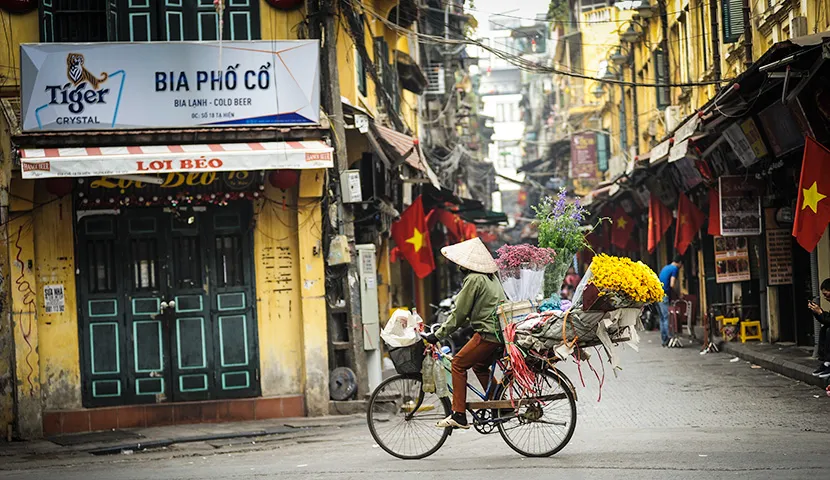







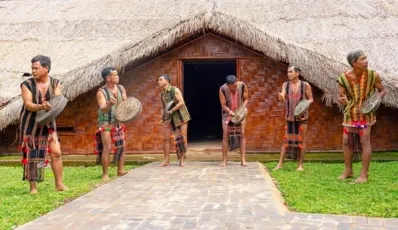

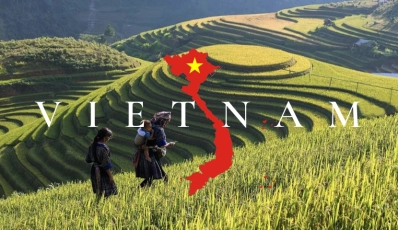



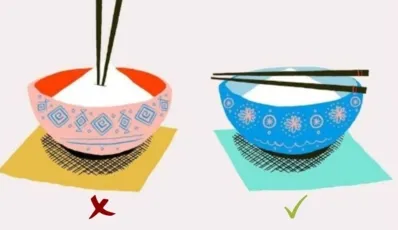
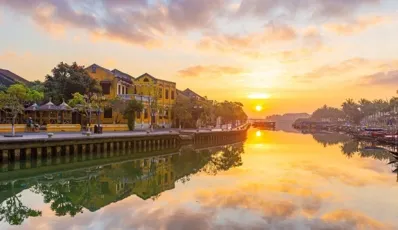

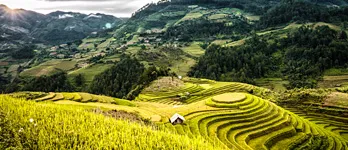
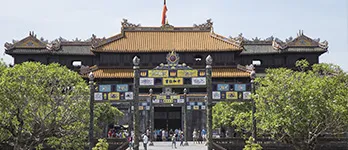
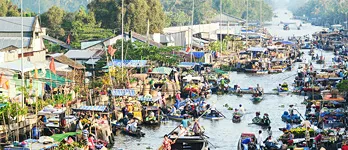

 TRAVELERS' CHOICE 2025
TRAVELERS' CHOICE 2025 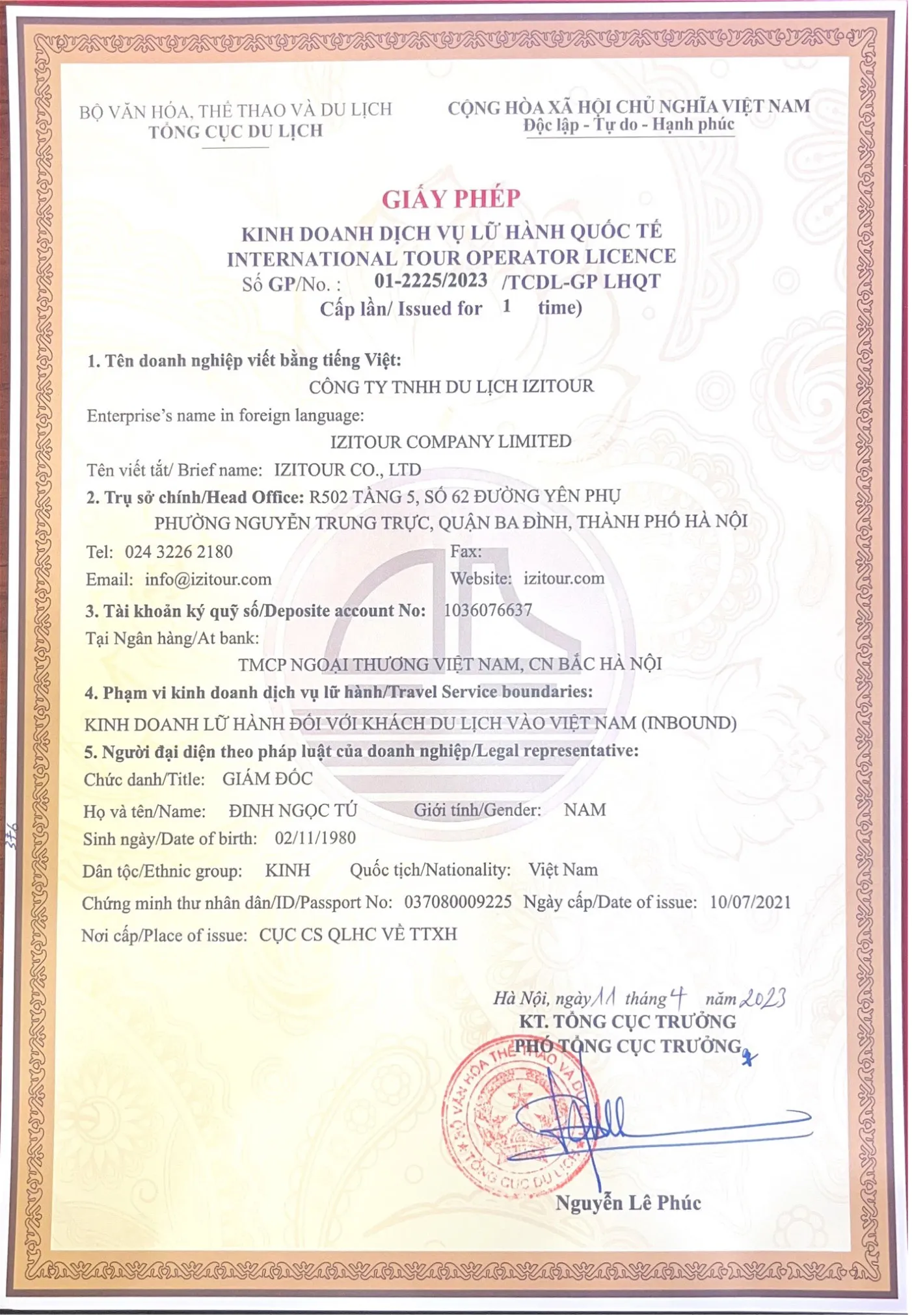



02 Comments
France
The travel guide is straightforward to follow. The recommended activities are flexible to change, depending on what I like. Thank you very much!
Vietnam
Write Reply